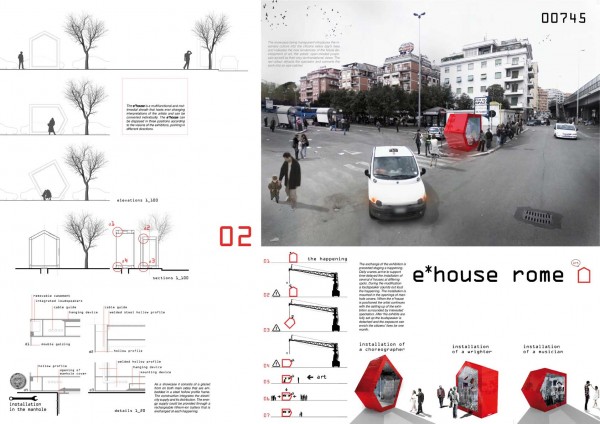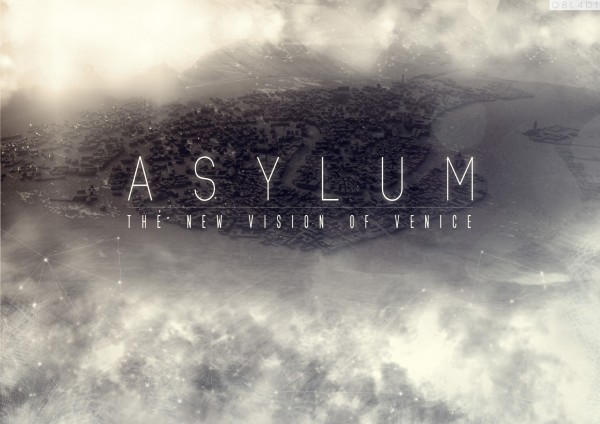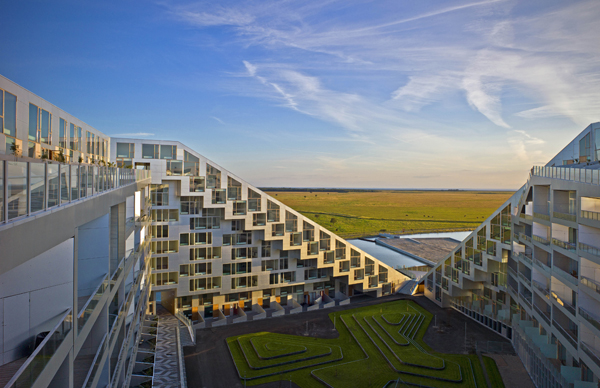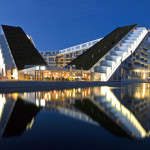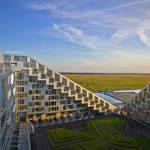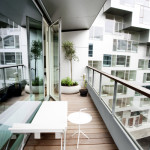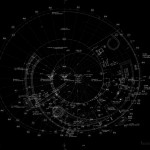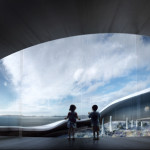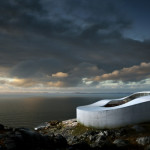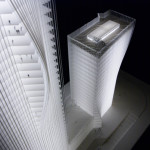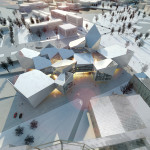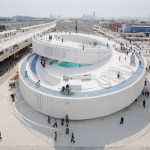BJARKE INGELS – CRAZILY CALCULATED
a special interview to Bjarke Ingels (BIG) by Francesco Lipari.
Telephone rings and here we are, the Danish accent of Bjarke Ingels answers, a few problems of line, it will maybe the historic snowing storm on New York to disrupt the beginning of our conversation?
FL 01: Your architecture seems so “crazily calculated”. What kind of people are there in your office that work around you in addition to your architect staff? What’s your inspiration outside the architecture field?
BI: My office is mostly made up of architects. Of course all my colleagues that help with running the office have different backgrounds such as communications and accounting. We have people from different academic backgrounds and people with financial backgrounds, but the majority are very traditionaly architects.
However, what we do when we begin a project is that we quite quickly establish the parameters for the specific project. If it’s a museum we are working on, we know we will need consultants in visual communication techniques, if it is an art museum, we need people that know about this specific art and if it’s a school, we will need to contact someone with a pedagogical background that would know about the latest ideas about teaching and learning.
So, by not employing a permanent staff, we are free to put together the appropriate team for each project. One of the characteristics of architects is that we are generalists: we can associate with many different areas of knowledge. We may not be experts in all fields, but we should strive to be literate, to have the intellectual capacity and the basic knowledge which then enables us to absorb new information at a fast pace. Therefore, at the beginning of each project, we spend a bit of time conducting research, and interviewing different experts to acquire the critical criteria needed to give a response to the project. The first two weeks of work are spent talking to professionals in our project’s particular field.
I think we draw our inspiration from all different kinds of fields. Sure, we have favorites, like the constant acceleration of innovation in contemporary culture which has been quite an inspiration on our work. It’s also the ideas of other experts that influence us.
Our general attitude is that the real world is already interesting enough. You often meet people who want to do radical things. They claim to be bored with everyday life and they look for all kinds of eccentric ideas for inspiration. It’s in the mundane that I think there is potential for solving the daily challenges of life and making them more exciting.
Rather than looking for some kind of exotic spice, we should try to just look harder at the demands and contradictions of everyday life to find something brilliant and interesting. In a way, a big part of our job is to open our eyes and open our ears to the potential developments and innovations in society that could then trigger a new experiment within architecture.
FL 02: On the topic of energy efficiency, do you think that world citizens should first change their bad habits and lifestylse before imposing and dictating a new way to live by making more use of renewable energies like the sun and wind. What is you idea on this argument? (Is it like having a Ferrari without a good driver?)
BI: I don’t think that consuming energy is bad, but polluting the atmosphere with CO2 and other contaminants is bad. So it’s not the action, it’s the way in which it’s carried out that’s the problem.
In that sense, the whole notion of sustainability is a design challenge. If we had unlimited resources, there would be no problem with using all the calories we can. The main task is to find a way to not waste energy, to use more intelligent means and also to get energy from a renewable source.
I like this idea of hedonistic sustainability: the problem of sustainability is not a moral or political dilemma, it’s a design challenge to organize and orchestrate not only the flow of people but also the flow of resources through our cities and buildings in a way that people can actually live the way they want, they can do what they want, but at the same time be sustainable.
If we approach sustainability by asking people to give up parts of their daily routines, it would be like going to a monastery and people simply won’t do it. Maybe they’ll do it on Sunday, but the rest of the week they’ll drive their car, enjoy nice temperature and take a warm shower, so it’s up to designers and architects to find a way to deliver all the splendors of a contemporary lifestyle in an efficient, renewable way.
We have to be sustainable before the building.
We have to design the world so that it actually supports people’s lifestyles. We must allow people to live the way they want, but in a way that doesn’t deprive the future generations of the possibility to also live the way they want. There are also examples where a sustainable city can increase the quality of life. Our pavilion for the Shanghai World Expo was like a congested experience of examples on how, in Copenhagen, the sustainability of the city actually increased the quality of life. People could bike around the pavilion and feel how much more fun it is to ride a bike, rather than sitting in a traffic jam or looking endlessly for a parking spot. They could also swim in the harbor because in Copenhagen the harbor water is so clean you can swim in it. These are all examples of how this city is environmentally friendly; you can engage in activities that would otherwise be impossible in a more polluted city, you can breathe fresh air and swim in the middle of downtown. We wanted to allow the Chinese to experience their body through the elements of Copenhagen city life that makes it more livable.
FL 03: Let’s talk about machines and architecture. Progress in the software and architecture industries has made everything possible, like what’s happened in the movie industry for some time. In the future, can you imagine your office full of machines that serialize your ideas, similar to the way Ford introduced a system of serialized objects during the early decades of the 1900s? So without architects, without any staff.
BI: No, I could imagine that once artificial intelligence becomes possible, you will have machines with human-like creativity and behavior. Ray Kurzweil wrote a book called “The Singularity is Near,” where he predicted that, sometime between 2030 and 2040, machines will acquire human intelligence. That means that they will actually merge the virtues of human intelligence and machine intelligence. Human intelligence is largely defined by incredible parallel bandwidth and the capacity to make intuitive guesses and hypothetical deductive reasoning. The capacity to get new ideas is going to be combined with machine intelligence, primarily characterized by the untiring capacity to compute really large and complex equations very fast without the need for sleep and also the capacity to instantly access vast amounts of data with high precision. Combining those two things will yield incredibly creative and powerful entities and although they are will not be organic and they will actually be human. I wouldn’t rule out the possibility that in 2040 you could have artificial intelligence that could act as architects and would be incredibly creative and innovative. Simply put though, turning the work of designers and architects into an automated process is formalism. So I really believe that architects should deploy all the tools they have available, should access all the data available, they should embrace all the technology that can allow them to approach a problem from different perspectives and then they will never automate the function of design because it necessitates the human characteristic of spontaneous and intuitive idea generation.
FL 04: In your latest projects, the Shenzhen Mansion, the Tek Building, the Sowwak Island Bridges in Abu Dhabi, I’ve noticed a new approach, more fashionable, more avant-garde. What about this new exploration? Is it because outside Europe one needs to have a stronger approach to win a competition and catch the attention of a client?
BI: I’m not sure I agree. The projects you’ve mentioned deploy a more curvilinear approach.
This new approach can be seen in projects you made outside Denmark. That’s why I asked this question.
I think architects are always driven by specific sort of parameters and ideas and to achieve those desired effects we can deploy various formal vocabularies, some would be boxy, some would be faceted, some would be curvilinear, some soft, some hard, there’s an incredible repertoire of tectonics that we don’t always assign since we are not limited or committed to a single style, we feel free to deploy whatever vocabulary will achieve our idea in the best way. And in the case of the Shenzen Maison, it has the characteristic of a pleated dress that’s actually made to block out direct southern sunlight while opening to the north so you have abundant daylight and minimum glare and thermal exposure in order to reduce the energy consumption of the building.
At Sowwak Island, the undulating surfaces allow for pedestrian access to programs nested into the bridge on multiple levels. We did a project in Slussen that was related to Sowwak Island, almost like a pre-study for Sowwak Island. In economies like the Chinese, we believe things are possible that would be overly expensive in a European or Danish economy and so in that sense the repertoire is sometimes limited by the location. That’s why we always look at the production apparatus, the economical environment and the labor force in the country where we operate to make sure that we match our ends with our means.
FL 05: For a generation of young architects you represent hope because you turned your dreams into reality and you have been lucky in realizing your projects, and especially in having fun… In Italy that only works if you have a saint in heaven or a friend in high places, otherwise it’s really hard to turn your ideas into something real. How does it work in Denmark and who was your saint? (What’s the key to your success, how did you start?)
BI: I should mention one defining moment, relatively early in my career I had the luck to run into a developer, Pierre Krisna, who became our client for the VM houses and for the Mountain and the 8-house.
I met him because one of our interns was close to the son of one of his friends, so randomly they met at some kind of family dinner and this intern, who by the way is now one of my partners, was talking about the fact he was studying architecture and he was interning in a young innovative office that had come up with some ideas for how to build more generous apartment, much cheaper than normally.
We were working on an idea where we would use agricultural greenhouses to create the exterior envelope for housing, where the housing inside would turn into wooden furniture that wouldn’t need to resist the hard climate of Denmark because it was inside of a protective climate.
He was curious because for a developer, better and bigger and cheaper sounds interesting. He came to our office and I showed him around and we hit it off. He’s a practical builder, he’s the director of multiple construction companies, and now he has become a private developer. He never did anything architecturally interesting, he always made straightforward, boxy stuff, but because we had this good connection and he understood our way of thinking, we created the VM house for him. This was at a time when we had built nothing.
During the process, I developed such a good relationship with him that we then did the Mountain, which was a very ambitious project and 8-house that I think is even more ambitious.
VM house was more 3-dimensional and complex, the Mountain created suburban homes with gardens in a dense urban context, and the 8-house expanded public space into the 3-dimensional spaces of the block. Of course it was an incredible stroke of luck that we met and also that we had such a good understanding and developed huge trust towards each other which enabled us to engage in more and more experiments and projects together.
FL 06: In Italy the budget spent on research and culture is really low. The country does not encourage talented individuals. Can you give any advice to our institutions or suggest a modus operandi that could aid with improvements?
BI: As architects we are never paid to research. People pay us to respond to a specific demand very quickly. I think what we do every time we begin a project is that we look for one key criteria and once we find it we define it as our field of research for this project. This project is dedicated to the investigation of the potential of a particular idea of the potential of a development in a specific field. We have to compute very quickly and therefore should make sure that ideas developed for one project are never lost, they must some how be accumulated to be revisited for another project.
An idea will evolve down to the forth or fifth generation, it will mature and be refined so that maybe what was considered too avant-garde or too radical.
FL 07: You like comics, right? If you could choose a power, which one would you like to have to help people live better than they do now?
BI: I would say the Jedi mind-trick, which gives you the incredible power of persuasion. I think as an architect, quite often our biggest obstacle is not gravity, or the economy or technology but it’s getting the clients, the city officials, the neighbors, the public, and all the contractors to actually commit to an idea and give it a chance.
FL 08: After “My Playground” and “Kibisi,” what’s your next architecture alchemy?
BI: The idea of alchemy is that you mix different things that are normally separated. By combining traditional ingredients in unusual ways, you create gold. The project I’m working on right now is an idea of writing an architectural theory book in the form of a conspiracy crime story. It will have the form of a fictional crime story yet it will deliver a lot of observations on conditions and role of architecture in contemporary society and history. The working title is “Who killed Corbu?”
Related Posts :
Category: Article
Views: 3450 Likes: 0
Tags: 8-house , Abu Dhabi , big , cityvision magzine , CO2 , copenhagen , crazily calculated , energy efficiency , interview , Kibisi , machines , Mountain , My Playground , Ray Kurzweil , Shenzhen Mansion , Sowwak Island Bridges , VM houses
Comments:
Info:
Info:
Title: BJARKE INGELS – CRAZILY CALCULATED
Time: 12 luglio 2011
Category: Article
Views: 3450 Likes: 0
Tags: 8-house , Abu Dhabi , big , cityvision magzine , CO2 , copenhagen , crazily calculated , energy efficiency , interview , Kibisi , machines , Mountain , My Playground , Ray Kurzweil , Shenzhen Mansion , Sowwak Island Bridges , VM houses

